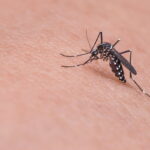Health considerations at very low air pollution levels are reported by a new Canadian study. Millions of Canadians are at higher risk of dying, even at low levels of exposure to fine particulate matter air pollution (PM2.5), levels that are below U.S. and other ambient air quality regulations, according to a recent comprehensive analysis by the Health Effects Institute (HEI). Lowering regulatory limits might result in additional health advantages because long-term outdoor PM2.5 exposures at levels as low as 2.5 micrograms per cubic meter were linked to an increased risk of death.
Michael Brauer and his colleagues at The University of British Columbia, School of Population and Public Health, Vancouver, used satellite data, air monitor sampling, and atmospheric modelling in the project Mortality-Air Pollution Associations in Low-Exposure Environments (MAPLE): Phase 2 to calculate the exposures to outdoor PM2.5 in Canada between 1981 and 2016. The group utilized thorough Epidemiology studies to assess the risk of death at various PM2.5 concentrations among 7.1 million Canadian individuals. Identifying the lowest concentration at which connections with health impacts could occur based on exposure ranges can be discovered establishing a connection between mortality and air pollution. Canadian air pollution exposure levels are frequently among the lowest in the world, improving comprehension of the severity of possible effects of air pollution.
For a long time, it has been believed that air pollution significantly increases the risk of respiratory, circulatory, and metabolic diseases as well as diabetes, heart disease, and diabetes-related complications. The burning of fossil fuels, which is responsible for more than 1 million deaths worldwide, is a significant source of PM2.5, according to HEI’s most recent Global Burden of Disease – Major Air Pollution Sources report. Major sources of PM2.5 in Canada include home heating with wood fuel, traffic emissions, and wildfires. Several studies published in the last ten years have found links between risk of death and long-term exposures to relatively low concentrations of PM2.5, despite the fact that air pollution concentrations have been dropping over the previous few decades in many higher-income nations.
Professor Brauer said, “These findings suggest important public health benefits from continued reductions in air pollution.” His research, which included extensive representative samples of the Canadian population, “provides compelling evidence of harmful effects of air pollution on mortality at levels below current national standards and international guidelines,” he added.
The Low-Exposure Epidemiology Studies Review Panel of HEI praised the researchers for compiling such extensive data, producing cutting-edge PM2.5 exposure estimations, and conducting in-depth statistical analysis in its independent review of the paper.
Additionally, there were various results for particular regions of Canada that could not be attributed to quantified demographic variations but may instead reflect variations in the mix of air pollutants.
The Panel reached the judgement that the impacts of bias more so than random error could have influenced the results because the study had a sizable sample size and excellent statistical power. Confounding variables like other contaminants, which the researchers were unable to account for, could be sources of bias. The amount of exposure measurement error may have varied across Canada’s urban and rural areas.
The panelists came to the conclusion that this report offers a high-quality and thorough investigation into correlations between mortality risk and exposures to ambient air pollution in Canada, using cutting-edge statistical methods to rigorously test whether air pollution exposure has a direct impact on health.


















